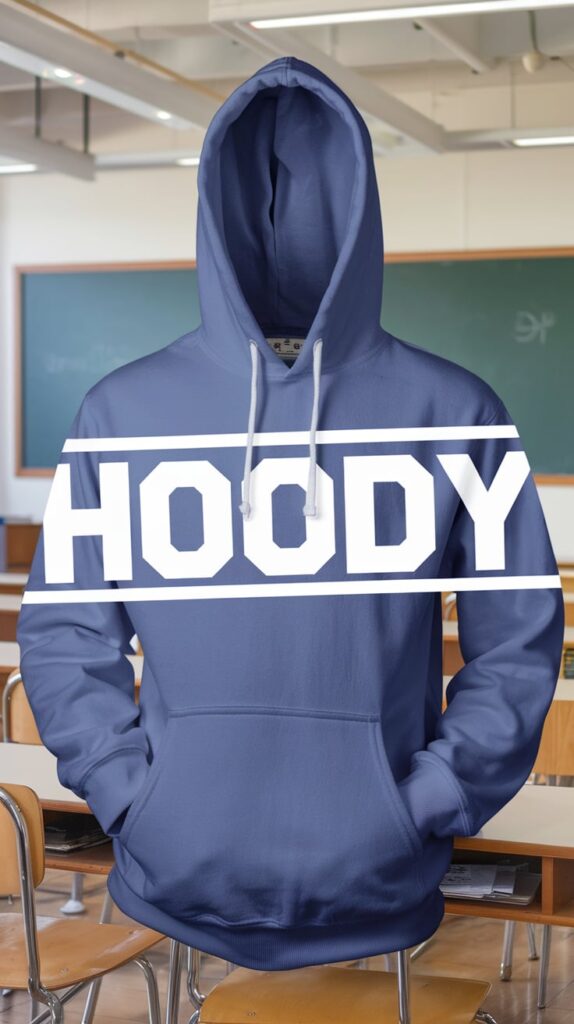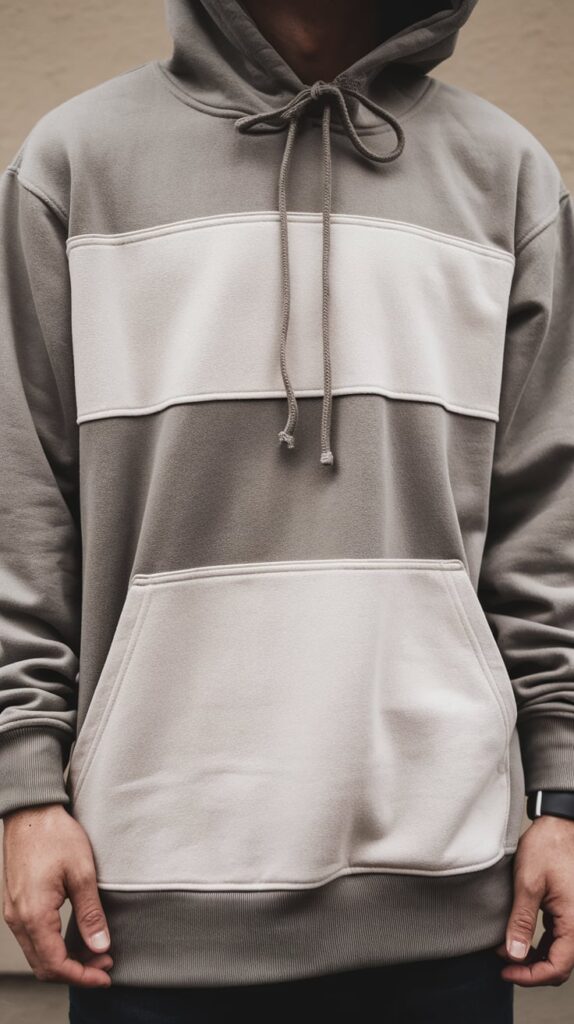The world of casual fashion is filled with comfort and style, but it can also lead to confusion over certain terms. One such term is the hoodie or hoody, a staple in many wardrobes.
In this comprehensive exploration, we’ll dive deep into the nuances of these two often-confused spellings. By the end, you’ll have a solid grasp on the usage, origins, and context of “hoodie” or “hoody.”
What is a “Hoodie” or “Hoody”?
To kick things off, let’s clarify what we mean by a hoodie. Essentially, a hoodie is a casual sweatshirt with a hood. It typically features a kangaroo pocket in the front and drawstrings to adjust the hood’s fit.
This versatile garment has become synonymous with comfort and style, making it a go-to choice for people of all ages.
read more : The Past Tense of Meet – Grammar Beacon

The Anatomy of a Hoodie
A typical hoodie is designed for both function and fashion. Here are some features commonly found in hoodies:
- Hood: The defining feature, providing warmth and protection against the elements.
- Kangaroo Pocket: A front pocket that adds utility, perfect for holding small items or warming your hands.
- Drawstrings: Cords that allow you to adjust the fit of the hood for added comfort.
- Fabric: Usually made from cotton or a cotton blend, ensuring a soft and cozy feel.
Scenario Example
Imagine it’s a chilly Saturday afternoon, and you’re heading out to grab coffee with friends. You throw on your favorite hoodie—the one that’s soft and slightly oversized.
As you walk down the street, you see a friend, Alex, wearing a bright hoody with a funky graphic print. Both of you look great, and you chat about how cozy your pieces feel.
read more : the Past Tense of Swing – Grammar Beacon
“Hoodie” or “Hoody”: Which Spelling is Right?
Now that we’ve established what a hoodie is, let’s tackle the spelling debate. The question arises: “Hoodie” or “hoody”—which is the correct spelling?
Hoodie:
- This is the more commonly accepted spelling in American English and is often found in fashion contexts. If you’re talking about the latest styles or trends, you’ll most likely see it referred to as a hoodie.
Hoody:
- This spelling also exists and may be used in various regional dialects or informal contexts. However, it’s less prevalent in mainstream fashion discussions.
Scenario Example
Consider a group of friends discussing their favorite brands over lunch. Julia mentions, “I just bought a new hoodie from that trendy store downtown.” Meanwhile,
Mark, less familiar with the term, asks, “Isn’t it called a hoody?” This sparks a fun debate about spelling, with most agreeing that hoodie is the way to go.
read more : Other Ways to Say Have a Nice Evening – Grammar Beacon

Origins of “Hoodie” and “Hoody”
Understanding the origins of these terms adds depth to our knowledge. The word “hoodie” emerged in the early 1990s as a slang shortening of “hooded sweatshirt.” Its rise in popularity coincided with the growing culture of streetwear and casual fashion.
Historical Context
In the 1930s, sweatshirts with hoods were developed for athletes to keep them warm during outdoor training sessions. However, it wasn’t until the late 20th century that the hoodie truly became a cultural icon, thanks in part to its association with youth culture and streetwear movements.
Scenario Example
Think back to a time when streetwear began taking off in urban areas. As you stroll through a local park, you see teenagers skateboarding in their stylish hoodies, showcasing bold colors and unique designs.
It’s clear that this fashion choice has roots in youth culture, further solidifying its place in modern fashion.
read more : the Past Tense of See :Saw and Seen – Grammar Beacon
“Hoodie” vs “Hoody”
When comparing “hoodie” and “hoody,” it’s essential to recognize their contexts. Although both refer to the same garment, their usage may vary.
Cultural Context
In American English, “hoodie” dominates conversations about casual fashion. On the other hand, “hoody” might be more commonly found in British or Australian English. Regardless of the spelling, the garment itself holds a special place in the hearts of many.
Scenario Example
In a fashion magazine, an article titled “Top 10 Must-Have Hoodies for Fall” will undoubtedly use the spelling “hoodie.” Conversely, in a casual social media post, a user might write,
“Just got a new hoody—can’t wait to wear it!” This illustrates how both spellings can coexist, depending on the setting.
What’s the Plural of “Hoodie” and “Hoody”?
Next up, let’s discuss the pluralization rules for both terms.
Pluralization Rules:
- For “hoodie,” the plural form is “hoodies.”
- For “hoody,” it also becomes “hoodies.”
This consistency makes it easy for users to switch between spellings without worrying about different plural forms.
Scenario Example
Imagine you’re shopping for your family. You tell the store clerk, “I’d like three hoodies in various sizes, please.” The clerk replies, “Sure! We have a great selection of hoody styles, too!” In this case, both terms are used fluidly, showcasing the interchangeable nature of the words.
read more : Traveler or Traveller: Which Spelling is Right? – Grammar Beacon
Usage Examples of “Hoodie,” “Hoody,” and “Hoodies”
To further clarify the distinction between these terms, let’s explore some examples in sentences.
Sentences with “Hoodie”:
- “My favorite hoodie is so warm; I wear it all winter long.”
- “She paired her stylish hoodie with denim jeans for a casual look.”
- “At the concert, everyone seemed to be wearing matching hoodies.”
- “I love how this hoodie has both style and comfort.”
- “The hoodie I bought last year still looks brand new!”
Sentences with “Hoody”:
- “He prefers his hoody because it feels more relaxed than a regular sweatshirt.”
- “That hoody has a unique design that really stands out.”
- “Whenever I feel down, I put on my favorite hoody to lift my spirits.”
- “I always keep a hoody in my car for chilly nights.”
- “Her hoody collection features designs from various artists.”
Comfort and Fashion: The Appeal of Hoodies
Hoodies are more than just a piece of clothing; they represent comfort and style. The relaxed fit and cozy fabric make them an appealing choice for many situations.
Whether you’re lounging at home, hitting the gym, or heading out with friends, a hoodie provides both practicality and flair.
read more : Plurals of ‘Ox’ and ‘Fox’ – Grammar Beacon

Scenario Example
Picture a lazy Sunday afternoon. You’re curled up on the couch, wearing your favorite hoodie and sipping hot cocoa.
Meanwhile, your friend texts you, suggesting a spontaneous outing. Without a second thought, you throw on your hoodie and head out, feeling stylish yet comfortable.
The Cultural Impact of the Hoodie
The hoodie has transcended its basic function, becoming a symbol of youth culture and even making waves in fashion circles. Various brands have created iconic styles that reflect personality and lifestyle.
Scenario Example
During a music festival, you notice a sea of people sporting different hoodies. Some are adorned with band logos, while others showcase unique designs.
You spot a group of friends in matching hoodies, clearly representing their favorite artist. This illustrates how the hoodie can serve as a canvas for self-expression.
Regional Variations in Usage
Depending on where you are in the world, you may encounter different preferences for spelling. For example, in British English, the spelling “hoody” might be more common in casual conversations, while “hoodie” still reigns supreme in fashion circles.
Scenario Example
If you were to visit a clothing store in London, the sales clerk might refer to a “hoody” when describing their stock. However, if you browse an American online store, it will likely showcase its collection of hoodies prominently.
This regional variation adds an interesting layer to the ongoing discussion about these terms.
The Role of Hoodies in Modern Fashion
Hoodies have made a significant impact in the fashion world, evolving from basic comfort wear to stylish, must-have items. Designers have embraced this trend, incorporating hoodies into high-fashion collections and streetwear lines alike.
High-End Fashion
Designers like Balenciaga and Off-White have featured hoodies in their runway shows, showcasing how this casual garment can fit into high-end fashion.
The blending of styles has redefined what a hoodie can represent, appealing to a broader audience.
Scenario Example
At a fashion show, a designer unveils a line featuring luxurious hoodies made from high-quality materials.
Attendees gasp as models strut down the runway, showcasing how a hoodie can be both chic and comfortable. This demonstrates the versatility of the hoodie in modern fashion.

Hoodies in Popular Culture
The hoodie has also cemented its place in popular culture. From movies to music videos, this garment has been portrayed in various ways, often reflecting a rebellious spirit or a laid-back attitude.
Scenario Example
Think of iconic film characters who donned hoodies—from the mysterious figures in The Matrix to the rebellious teens in The Breakfast Club. Each portrayal contributes to the cultural narrative surrounding the hoodie, making it more than just a piece of clothing; it becomes a symbol of identity.
Comfort Meets Functionality
One of the primary reasons for the hoodie’s popularity is its combination of comfort and functionality. It serves various purposes—from keeping you warm during outdoor activities to offering a casual style that works for various occasions.
Scenario Example
Imagine you’re going for a morning jog. You reach for your lightweight hoodie to keep warm without overheating. After your run, you transition seamlessly into a casual brunch with friends, where your hoodie fits right in. This duality showcases the practicality of this beloved garment.
The Environmental Impact of Hoodies
As the demand for hoodies increases, so does the need for sustainable practices in their production. Many brands are now focusing on eco-friendly materials and ethical manufacturing processes.
Scenario Example
You might be shopping at an eco-conscious brand that prides itself on using recycled materials for their hoodies. As you read the labels, you feel good knowing that your fashion choices contribute to sustainability.
This shift towards responsible consumerism reflects a growing awareness of environmental issues.
Hoodies as a Symbol of Resistance
In some contexts, the hoodie has been adopted as a symbol of resistance. This became particularly evident during social movements where the garment represented a defiance against stereotypes and injustices.
Scenario Example
Consider a peaceful protest where many participants wear hoodies as a statement of solidarity. The visual impact of a sea of hoodies sends a powerful message, transcending language and cultural barriers.
This illustrates how fashion can serve as a medium for social change.
The Future of Hoodies
As we look to the future, the hoodie’s evolution is likely to continue. With advances in fabric technology and changing fashion trends, we can expect to see new designs and features that enhance comfort and functionality.
Scenario Example
You may come across a hoodie equipped with built-in technology, such as heated fabric for colder climates or moisture-wicking properties for athletes. The possibilities are endless, showcasing how the hoodie can adapt to modern needs while retaining its core appeal.
Conclusion
In conclusion, the debate between “hoodie” and “hoody” may seem trivial, but understanding the nuances can enhance your communication and appreciation of this iconic garment.
Both terms refer to the same cozy piece of clothing, but usage may vary depending on context and region.
Whether you prefer the spelling “hoodie” or “hoody,” what matters most is how you feel in this beloved garment. As you explore the world of casual fashion, let your choice reflect your style, comfort, and personality.
So the next time you slip into your favorite hoodie (or hoody), remember the cultural significance and versatility it represents. It’s not just a piece of clothing; it’s a statement.

Sources
- Merriam-Webster: Definitions and meanings of “hoodie” and “hoody.”
- Etymonline: Etymology of “hoodie.”
- Fashion articles and trend reports on hoodies.
- Environmental studies on sustainable fashion practices.
Here’s a summary table encapsulating the key points from the article about “Hoodie” vs. “Hoody”:
| Category | Details |
| Definitions | Hoodie: A casual sweatshirt with a hood. Hoody: An alternate spelling of “hoodie.” |
| Spelling Preference | – Hoodie: More common in American English and fashion contexts. – Hoody: Used in various regional dialects, less prevalent in fashion. |
| Origins | Emerged in the early 1990s, slang for “hooded sweatshirt.” |
| Cultural Significance | Represents youth culture, comfort, and self-expression. |
| Pluralization | – Hoodie → Hoodies – Hoody → Hoodies |
| Fashion Impact | High-end designers have embraced hoodies, merging comfort with style. |
| Popular Culture | Featured in movies and music videos, symbolizing rebellion and casual attitude. |
| Functionality | Combines warmth and style, suitable for various activities. |
| Sustainability | Increasing focus on eco-friendly materials and ethical production practices in hoodie manufacturing. |
| Resistance Symbolism | Adopted as a symbol of social movements, representing defiance against stereotypes and injustices. |
| Future Trends | Anticipated advancements in fabric technology, including smart fabrics and enhanced features. |
This table provides a concise overview of the main points discussed in the article, making it easier to understand the nuances of “hoodie” and “hoody.”

James Logan is a seasoned blogger and language enthusiast behind Grammar Beacon. With years of experience in grammar and writing, James shares his expertise through insightful and engaging content. His passion for clear communication and linguistic precision shines in every post, making complex grammar concepts accessible and enjoyable for readers. Follow James for expert advice and tips to refine your writing skills.







